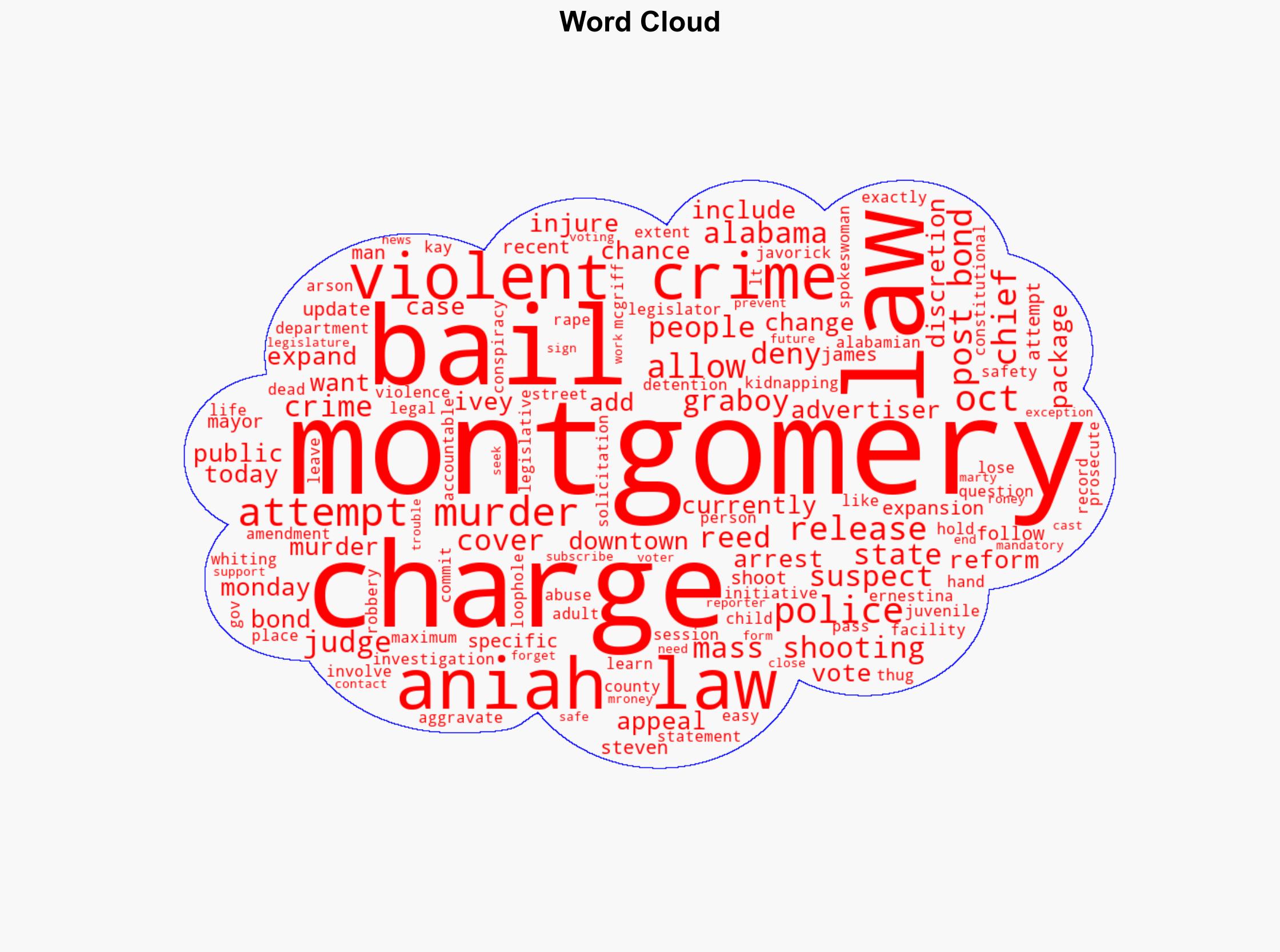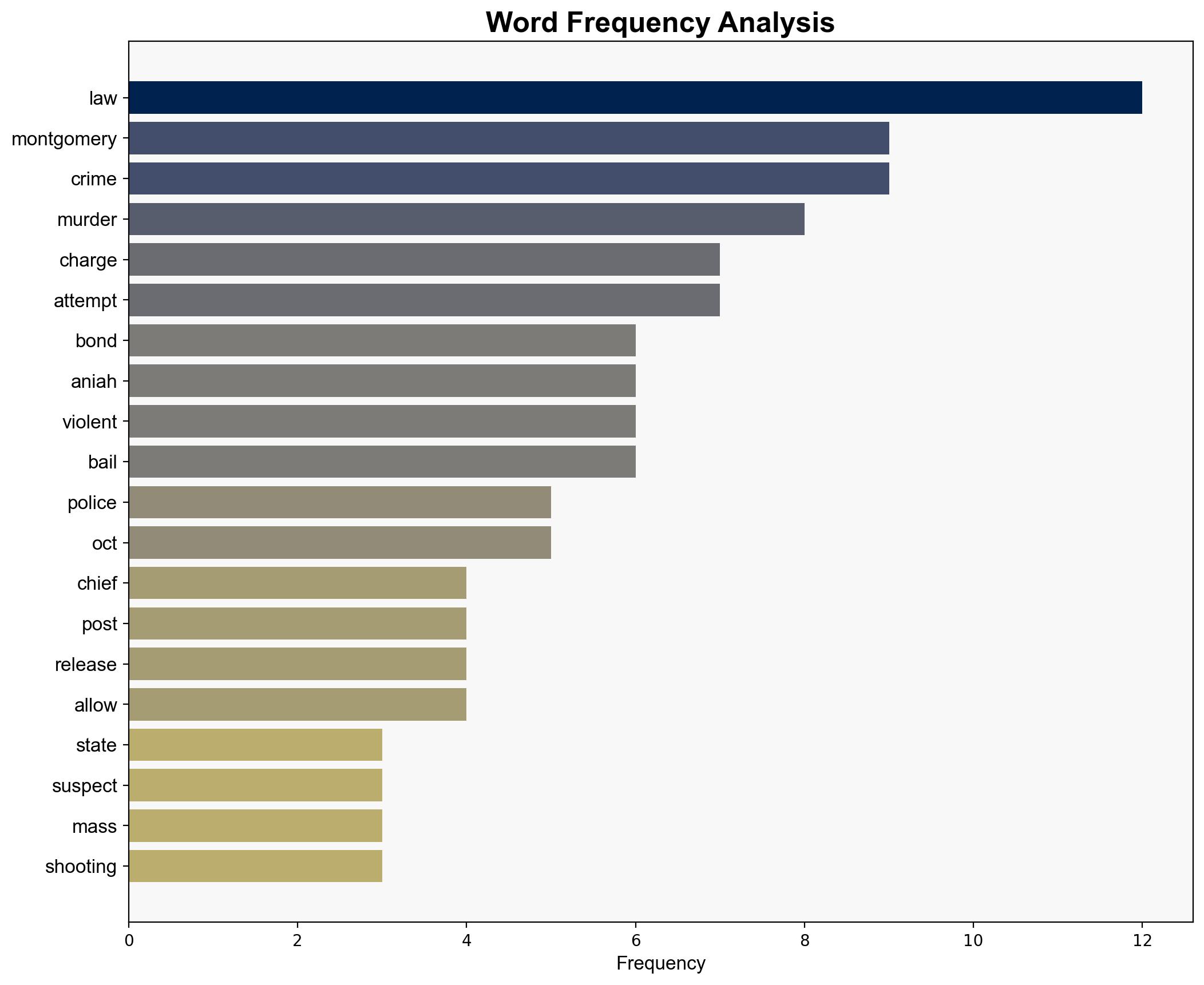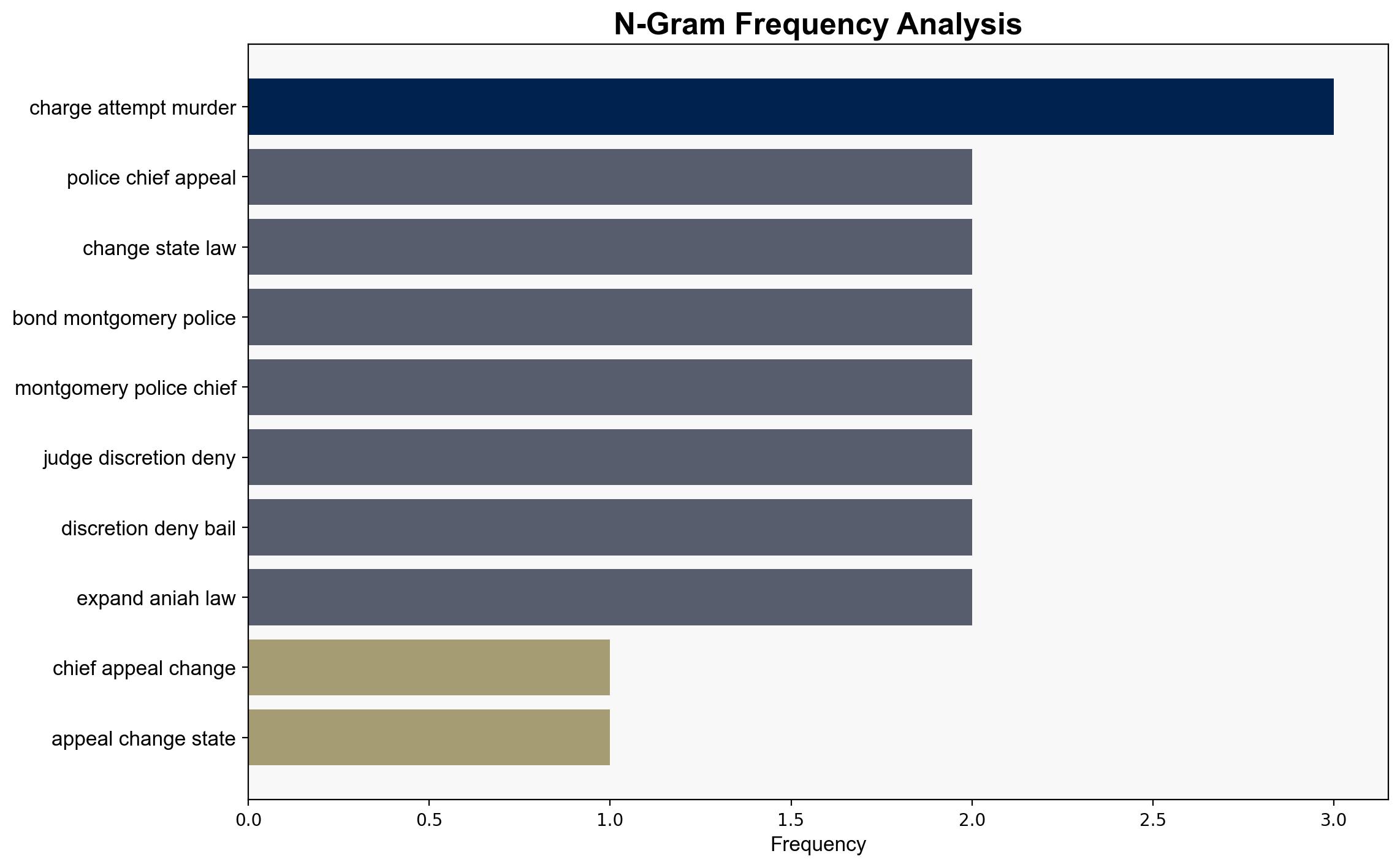Police chief appeals for change to state laws after Montgomery shooting suspect posts bond – Montgomery Advertiser
Published on: 2025-10-21
Intelligence Report: Police chief appeals for change to state laws after Montgomery shooting suspect posts bond – Montgomery Advertiser
1. BLUF (Bottom Line Up Front)
The most supported hypothesis is that the current legal framework in Alabama, specifically Aniah’s Law, inadequately addresses the risk posed by individuals charged with violent crimes, leading to potential public safety threats. Confidence in this assessment is moderate due to the complexity of legal reform processes and political dynamics. It is recommended that stakeholders pursue legislative amendments to expand the scope of Aniah’s Law to include attempted murder and other violent crimes.
2. Competing Hypotheses
1. **Hypothesis A**: The current legal framework, including Aniah’s Law, is insufficient in preventing potentially dangerous individuals from being released on bond, thereby posing a public safety risk.
2. **Hypothesis B**: The release of individuals charged with violent crimes on bond is an isolated incident, not indicative of systemic legal inadequacies, and can be managed through existing judicial discretion and law enforcement practices.
Using ACH 2.0, Hypothesis A is better supported due to the police chief’s explicit call for legal reform and the identified loophole that allowed the suspect’s release. Hypothesis B lacks support as the incident aligns with previous concerns about the limitations of Aniah’s Law.
3. Key Assumptions and Red Flags
– **Assumptions**: It is assumed that expanding Aniah’s Law will effectively prevent similar incidents. Another assumption is that legislative changes can be swiftly enacted.
– **Red Flags**: Potential political resistance to legal reforms and the complexity of amending state laws. The reliance on public opinion and voting outcomes introduces uncertainty.
– **Blind Spots**: The analysis may overlook alternative legal measures or reforms that could address the issue without amending Aniah’s Law.
4. Implications and Strategic Risks
Failure to amend the law could lead to increased public safety risks and erode trust in the judicial system. Conversely, swift legal reforms could set a precedent for addressing similar legal loopholes in other jurisdictions. The situation may escalate if further incidents occur, potentially leading to public unrest or political pressure on state officials.
5. Recommendations and Outlook
- Engage with policymakers to draft amendments to Aniah’s Law, focusing on expanding its scope to include attempted murder and other violent crimes.
- Conduct public awareness campaigns to garner support for the proposed legal changes.
- Scenario Projections:
- Best Case: Successful amendment of Aniah’s Law, leading to enhanced public safety and legal clarity.
- Worst Case: Legislative gridlock or public opposition prevents reform, resulting in continued legal loopholes and potential public safety incidents.
- Most Likely: Incremental progress towards legal reform, with partial amendments achieved through negotiation and public support.
6. Key Individuals and Entities
– James Graboys
– Steven Reed
– Kay Ivey
– Javorick Whiting
– Ernestina McGriff
7. Thematic Tags
national security threats, legal reform, public safety, judicial system, legislative process



